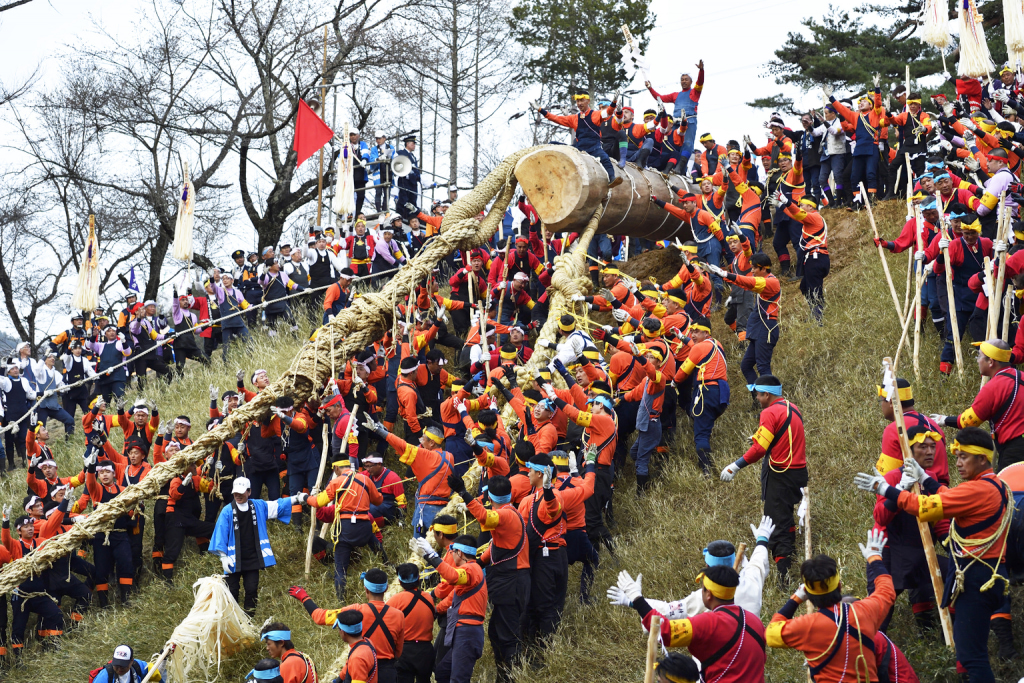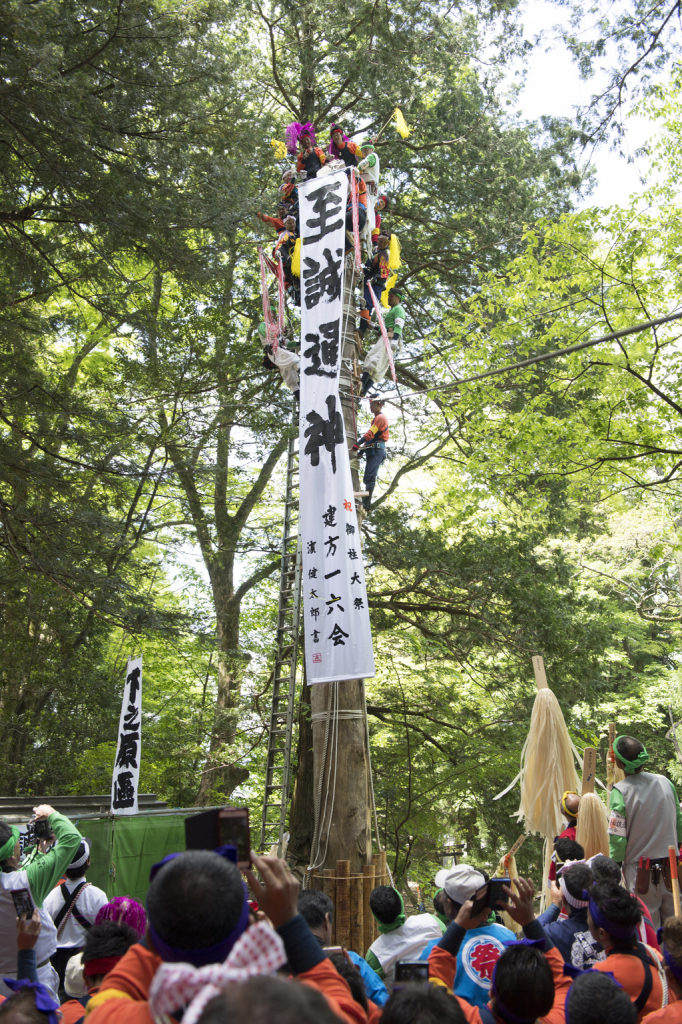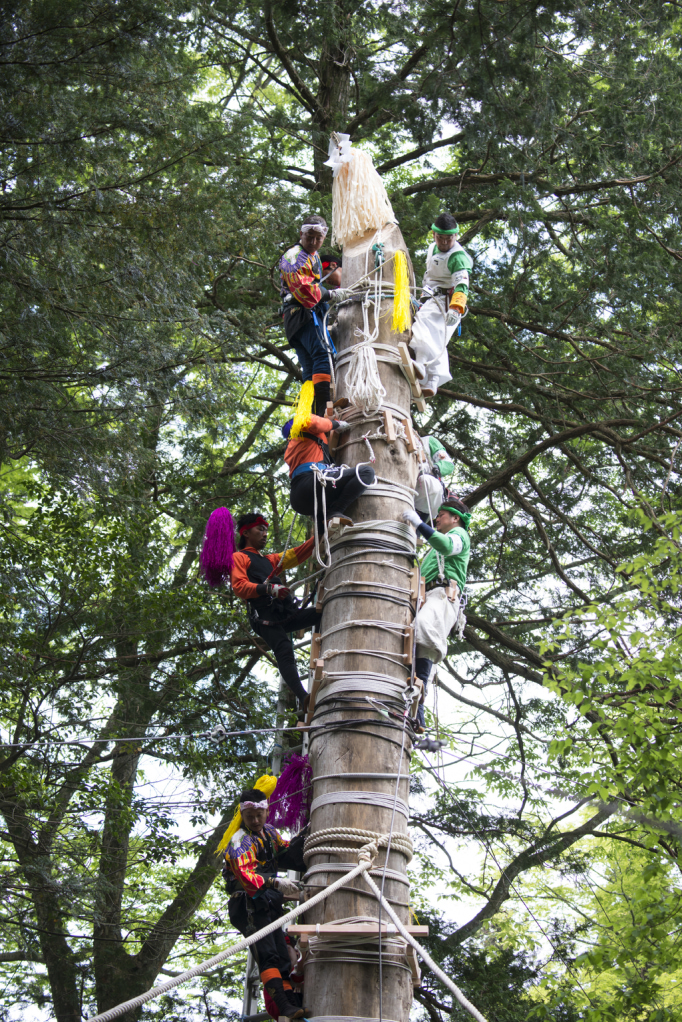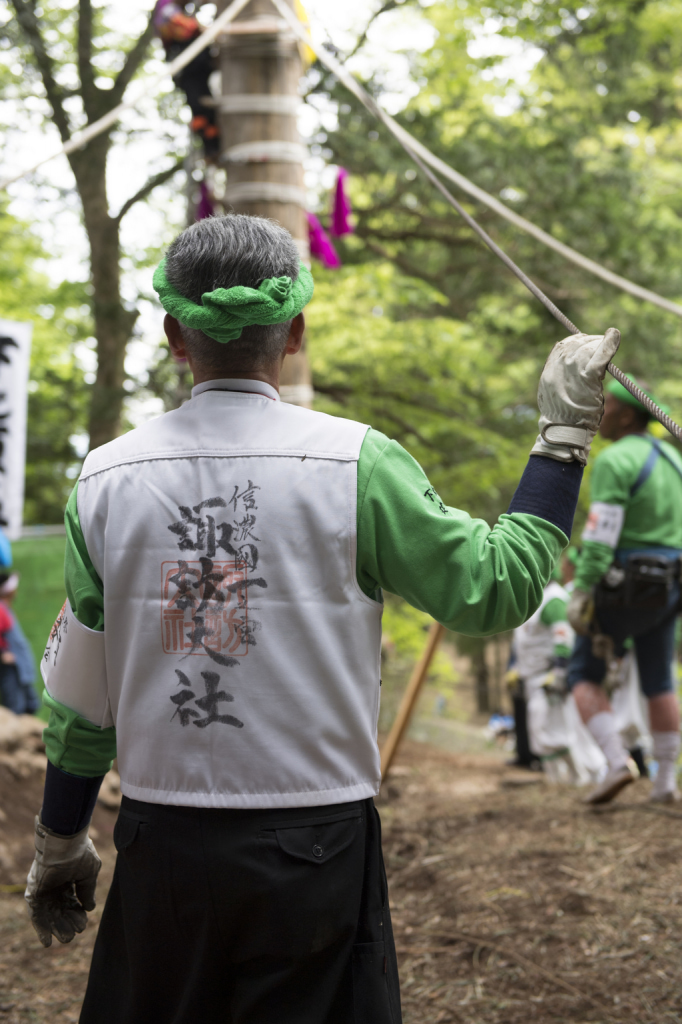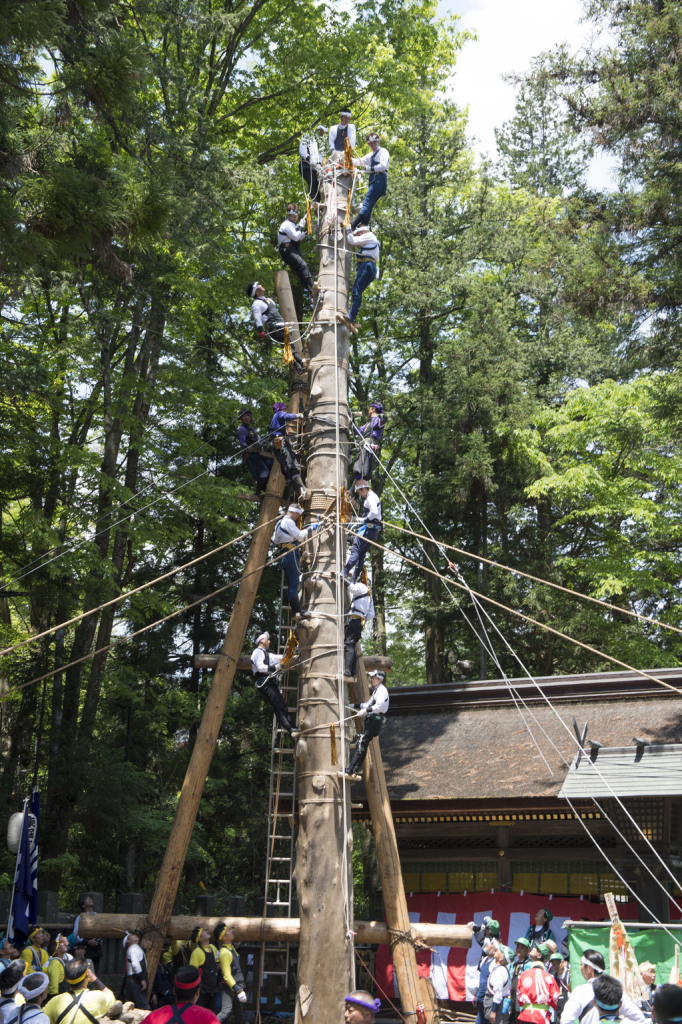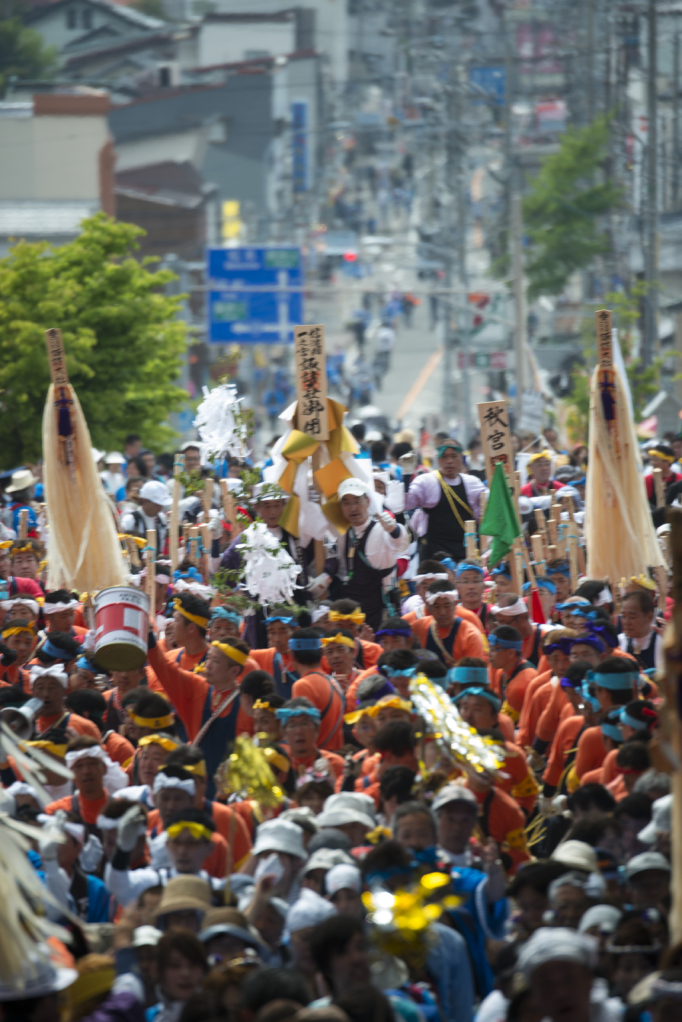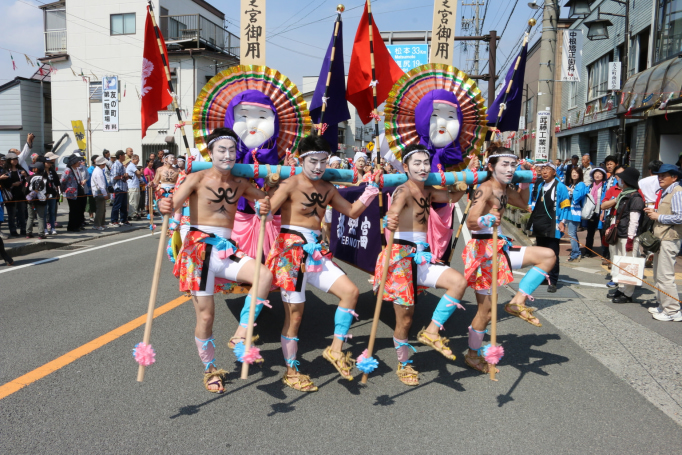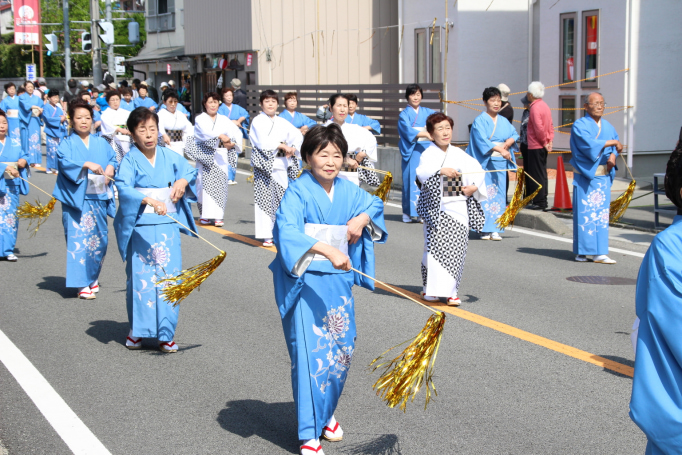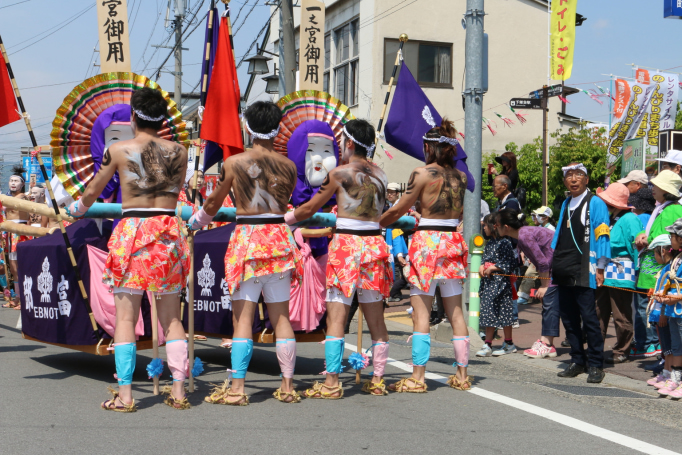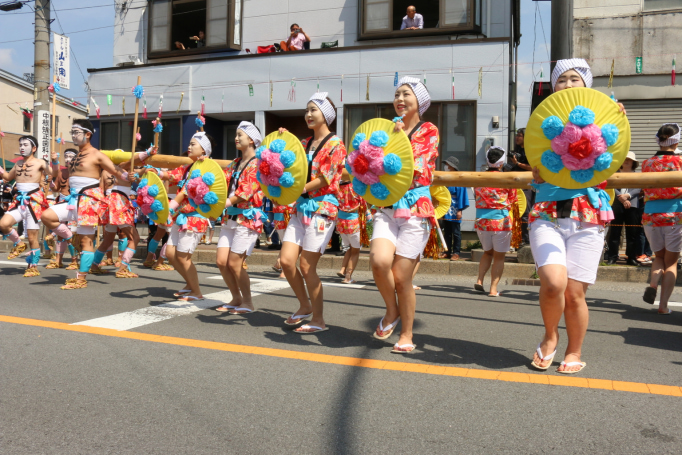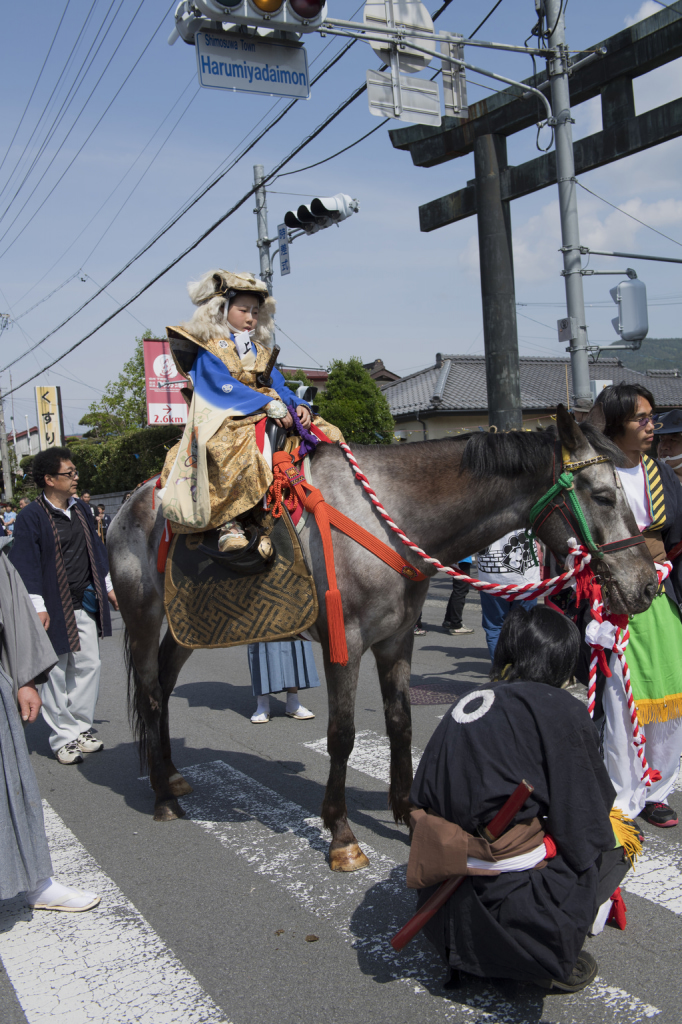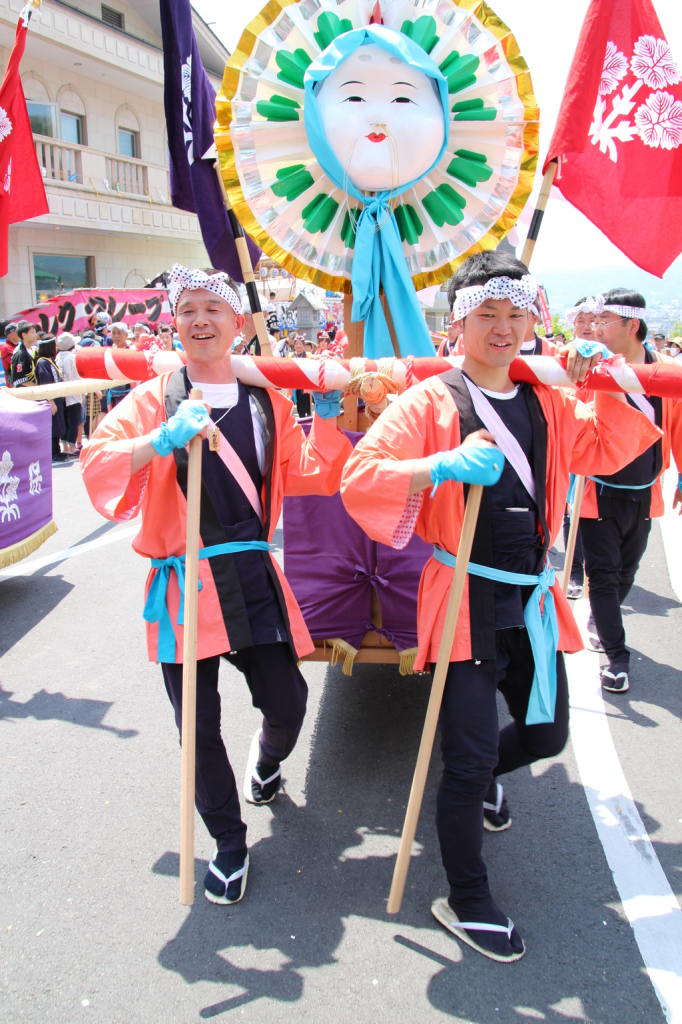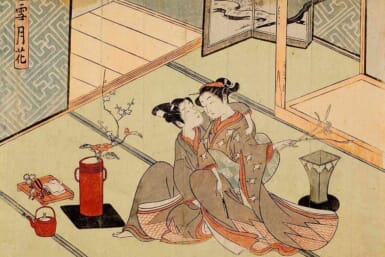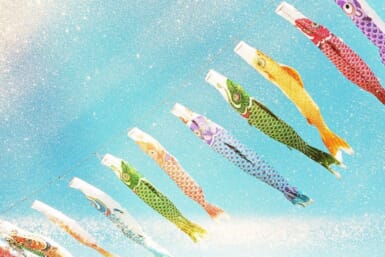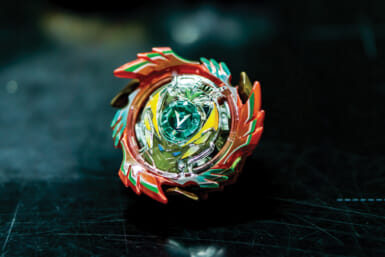On a sunny cool spring morning on April 9, an age-old tradition took place in Suwa, Nagano Prefecture again after six years. (Locals, however, will tell you it happens every seven years because they count the year of the festival twice). The tradition, based on a 1,200-year-old ritual, is the Onbashira Festival. In 2022 it was a little bit different due to the pandemic with no spectators for the log riding down the mountain. Regardless, locals came to observe or participate, very proud to continue the tradition.
On April 9, the first phase of Onbashira, called Yamadashi (meaning ‘coming out the mountain’), took place. TW went to witness this year’s festivities.

Log cutting, 2022
The Roots of Onbashira
For hundreds of years, people in the Suwa region have cut trees in the forest and carried them to a shrine to rebuild that shrine. Hence the name Onbashira, coming from “hashira” which means pillar in Japanese. The festival with deep cultural and Shinto roots also honors the tree gods.
For the Yamadashi phase of the festival, the four best trees for pillars are cut down and then ridden into town. Riding the log down a hill (kiotoshi) or across a river (kawagoshi) is probably what the festival is most well-known for, but both activities can be dangerous. In the past, many people were injured and sometimes, sadly, there were fatalities too.
The Satobiki phase is when the logs are brought to the shrines and erected. It takes place in May, after the Yamadashi portion of the festival.
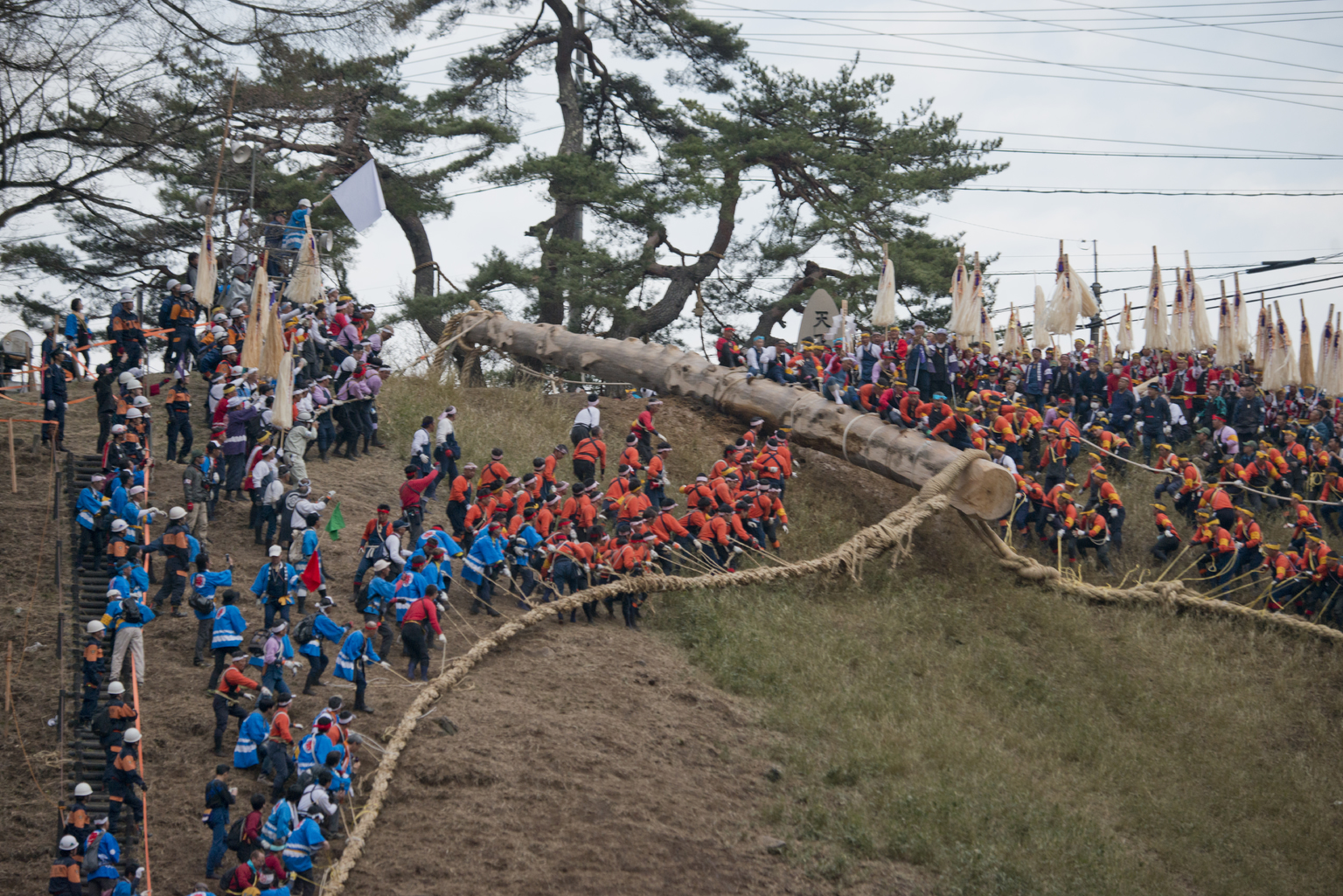
Log riding, from Onbashira festival 2016
The festival still holds great significance for the people of Suwa. It makes them feel part of the community and gives them goals and dreams. One mother who brought her children to watch the festival told me she really wants her children to take an interest in the festival and hopefully one day participate in it. That’s not uncommon here. Children dream of becoming Kiyari (people who chant) or Norite (people who ride the logs).
Obohe Tamaki, who walked in the procession with the log, said, “When I was a little boy and watched the festival, I really wanted to [participate] in Onbashira. I dedicated my whole life to participating. Here I am today, one of the lucky ones to be so active in the festival.”
Unlike other festivals, Onbashira participants need to have deep roots in the area. One of the elite administrators and participants told me that his family roots go back to his grandfather in the Meiji Era. As a result, he and several of his relatives have high status in the festival.

Onbashira festival 2022, photo by author
The 2022 Iteration of Onbashira Festival
This year the festival took place on a warmer than usual spring day. From families and children to senior citizens, many locals came out to watch. They carried their pompoms to cheer on the procession and wore their happi coats to show their support. Overall, the crowds were smaller than in past festivals, but there were still enough people to cheer and wave to the participants and make it feel like a festival, albeit a smaller one than usual.
At first, we could hear yells of “yoisa” which is the common cheer of the participants to encourage the pulling of the log. A short time later, the procession rounded the curve and we could see them all in their outfits carrying banners. However, due to the pandemic, only a small number of people were allowed to walk along by the log and a truck hauled the log. The yells of “yoisa” grew louder and the observers joined in.

Onbashira festival 2022, photo by author
Suddenly someone started the kiyari (chant) and the festival atmosphere heightened. About 10 minutes later the procession had moved around the next bend and yells of “yoisa” slowly faded away. But the procession carried on for many more kilometers to take the log to the hill where during a usual Onbashira Festival they would ride it down the hill.
In the early afternoon, the procession once again followed the same route. Finally, all the participants returned back to their homes to enjoy a lunchbox, sake and beer that they received to celebrate their successful day.
Onbashira Festival: Ongoing Activities
The Yamadashi phase of the festival has now concluded, but that’s not the end of things. In a normal Onbashira Festival, people finish dragging the logs to the local shrines of Maemiya, Honmiya, Akimiya and Harumiya. Between May 14 and May 16, the next phase called Satobiki takes place.
At this event, they raise the pillars to signify the rebuilding of the shrines. Finally, the festival repeats in the summer and fall in small local neighborhood shrines, so many people can participate. After that, the process starts again with people working to prepare for the next festival in another six (or seven) years.
“It was sad that this year Onbashira took place during a pandemic and a war. Unfortunately, in many ways, the festival was not the same. But I still enjoyed myself and I had so many memories of past festivals,” Tamaki told me.
See the gallery below with photos from the Satobiki phase of Onbashira festival from 2016.

